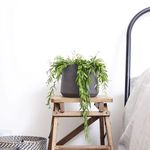
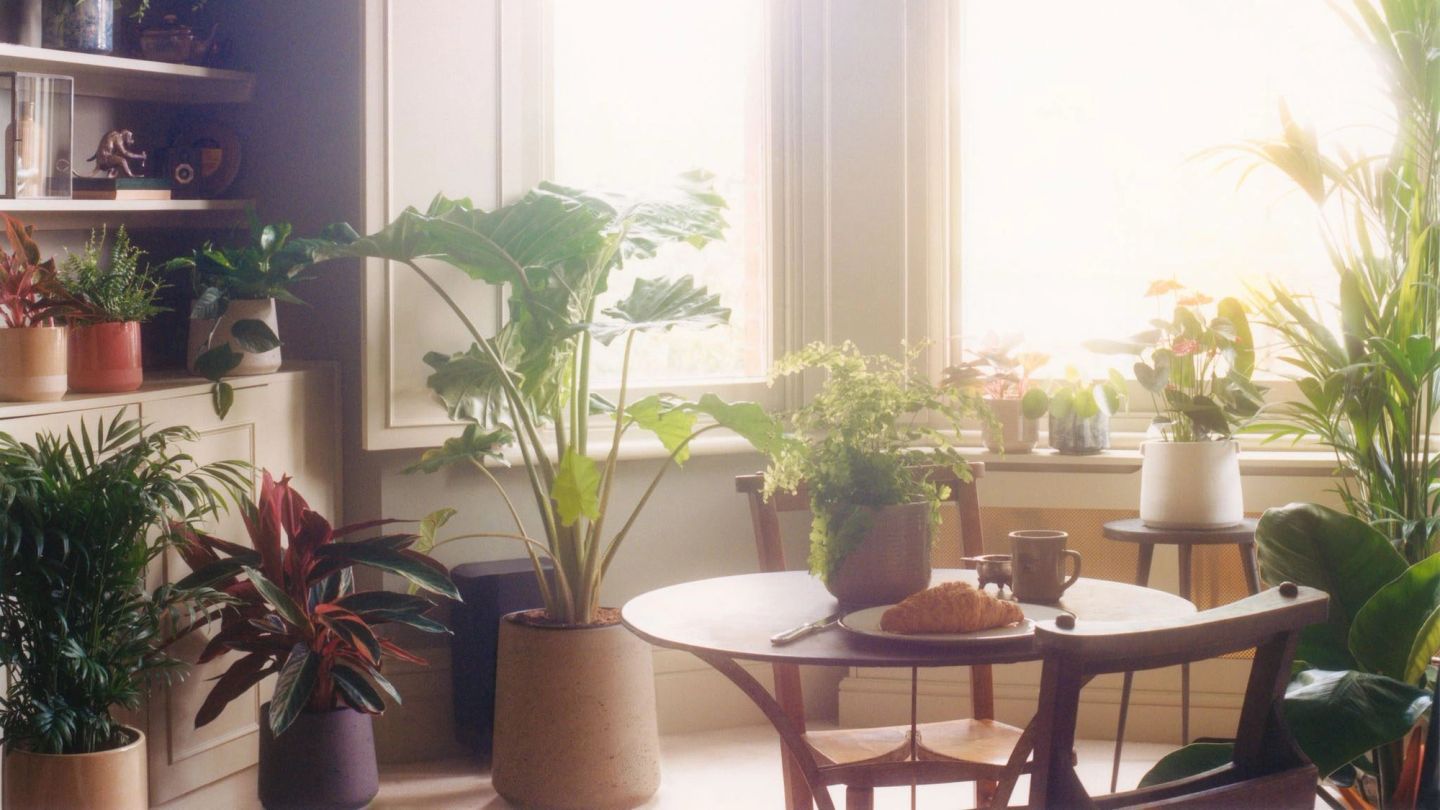
Words: Izzie Price
Photography: Jack Wilson
Lockdown was a little short on silver linings. Green linings, on the other hand, have sprung and sprouted up all over our homes during the last year. We’ve started using house plants as a way to bring the outside in; to reconnect with nature, even if we’re spending our days sitting on conference calls.
And the benefits of these lush, leafy ornaments cannot be overstated. Among the many perks and plusses, house plants have been proven to create relaxing environments, improve memory retention, boost your mood, cleanse your air and oxygenate your workspace. They also just brighten the place up.
And, thanks to burgeoning businesses such as Patch Plants (a brand that has bloomed and blossomed with the best during lockdown), you can now get carefully curated collections of ferns, flowers, palms and plants delivered directly to our doors — from all over the world.
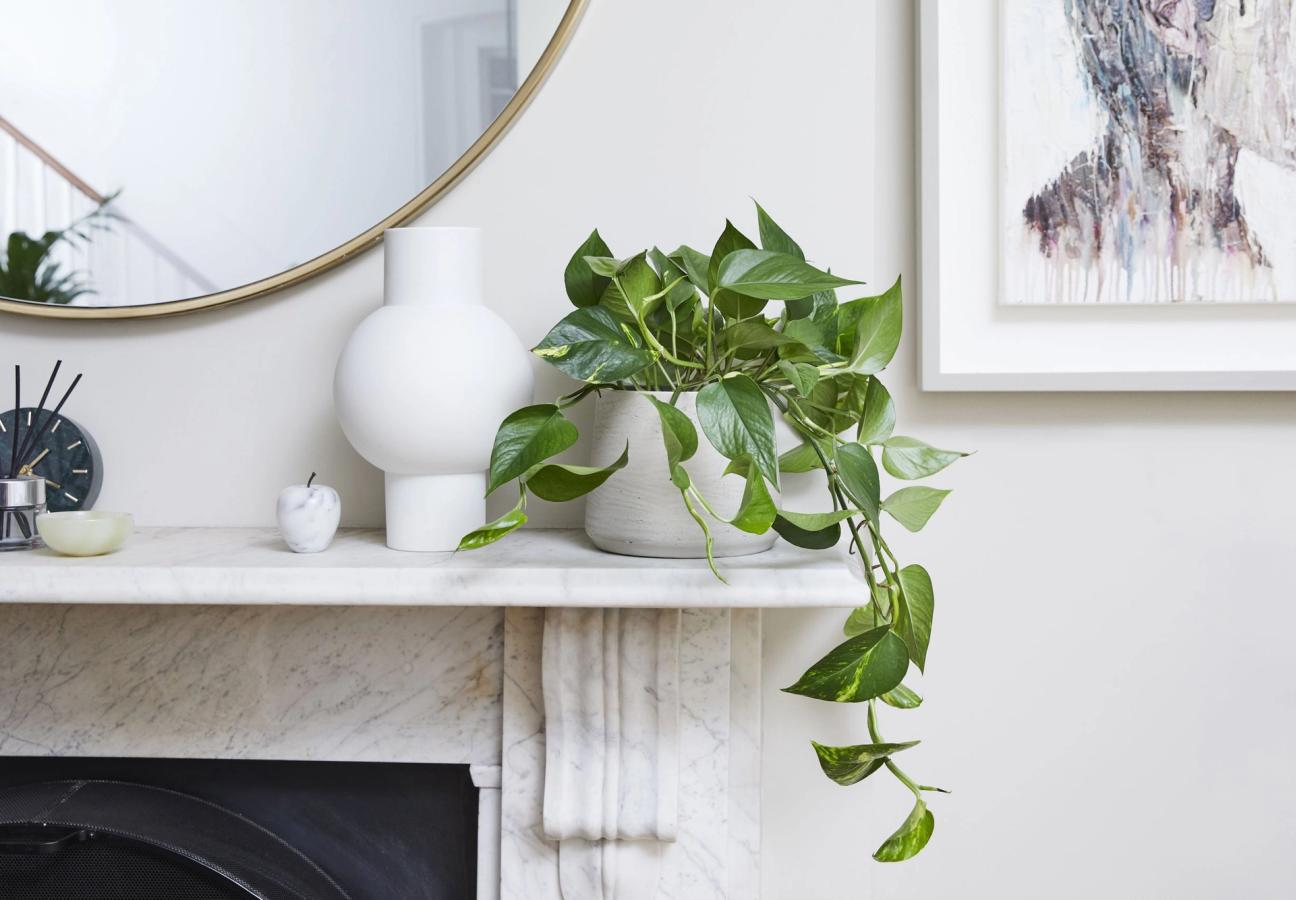
You could drape a Devil’s Ivy over your bookcase; a creeper native to the islands of French Polynesia. You could spruce up your home office with a Maidenhair Fern, indigenous to the temperate foothills of the Himalayas. You could even bow down to the benefits of the bright red Prayer Plant, local to the tropical jungle groves of the Amazon rainforest.
If you purchase a striking, statement pot, your foliage can also double as furniture. Whether terracotta, wicker, concrete or cork, these decorative accessories will spruce up even the drabbest corners of your home. So take a look — and turn over a new leaf this summer.
Bring some character into your workspace with a lipstick plant
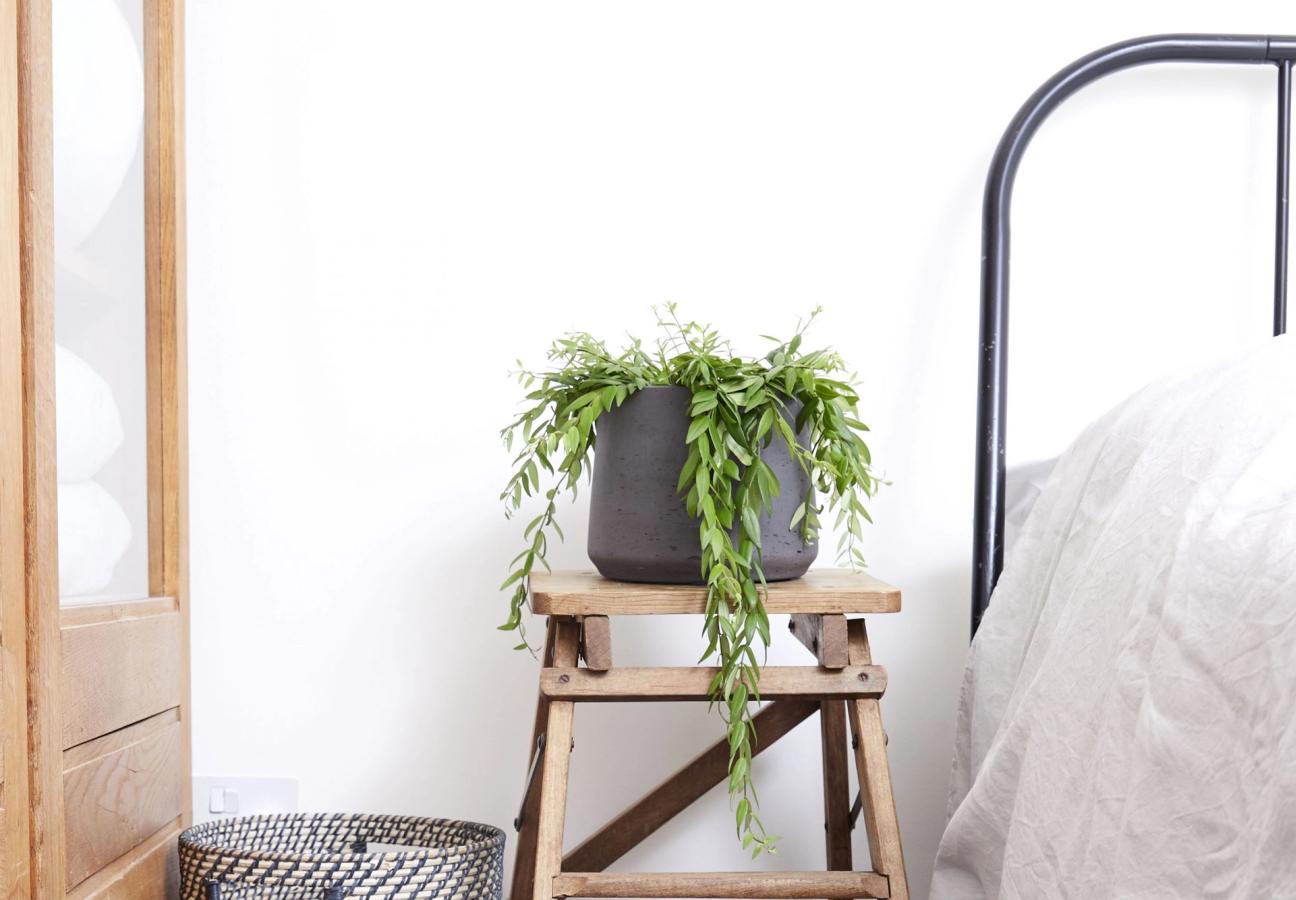
Where it’s grown: You’ll find the lipstick plant (or the Aeschynanthus Japhrolepsis, to give it its full moniker) growing in steamy forests across the whole eastern hemisphere; Indonesia, in particular. There are over 150,000 different species, and they’re generally found thriving in nooks — or on trees or rocks — rather than on the ground.
How it blooms: You’re most likely wondering where the ‘lipstick’ element comes in? Well, you’d need to see the plant in full flower to really appreciate its acronym; but when it’s in full bloom, bright red flowers emerge from small tubes, much like lipsticks twisting out of their holders.
How to care for it: When cared for correctly, the lipstick plant can create a tumbling cascade of colours and textures; ever wanted to turn your bookcase into a feature wall? Because this would be the way to do it. So when it comes to caring for the plant, be sure to get it right: it needs a solid amount of bright light, but not direct sunlight. Keep its soil moist, with light watering — and be sure to invest in a mister, for regular squirts.
For a compact, no-nonsense plant, opt for the Watermelon Begonia
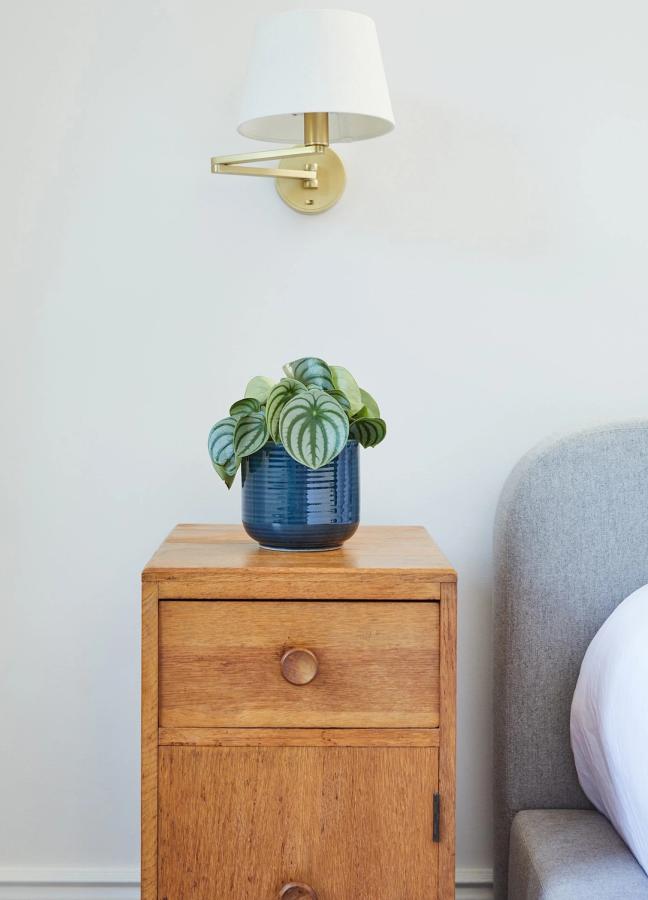
Where it’s grown: Also known as a Watermelon Peperomia (or a Peperomia Argyreia, to be specific), this adorable plant can be traced back to South America: Bolivia, Ecuador and Venezuela, to be precise. It likes moist areas — often rotting wood, if you can bear the thought — and it rarely grows beyond about 20cm. Like we said: adorable.
How it blooms: Well, you’ve probably guessed how this one achieved its name; those leaves are indistinguishable from the shiny exterior of a watermelon. But we should manage expectations now: this plant won’t actually grow watermelons for you. It just bears a striking resemblance — and a very elegant one, too.
How to care for it: This plant isn’t a needy one, really. It needs a little humidity in the air — this is where your mister will come in handy — and thrives in either bright shade or low light. And where watering’s concerned, it just needs light watering little and often.
The Red Chinese Evergreen is a plant for the time-poor

Where it’s grown: The Aglaonema Crete, if we’re to term it correctly, can be found happily basking in the dappled light of the forests in South East Asia. It’s a low maintenance bloom; it was first introduced to the UK in the late 1800s, but rapidly became popular as a plant for homes or offices, due to its vibrant blooms and laid back qualities.
How it blooms: Those laid back qualities will make themselves abundantly known as this plant blooms; it needs very little attention, but simultaneously can bring a real splash of colour to your living spaces, with its glossy, vibrant leaves.
How to care for it: Well, lets just say it’s traveller friendly. This is a plant that can tolerate pretty much any light conditions except direct sun (though the more light it gets, the brighter its colours will be). It’ll merrily soak up the steam from the bathroom, with humidity contributing to the health of its leaves; and it only needs light watering — check it weekly for dry soil (in which case, it’s time for a drink); but it’ll be fine for a couple of weeks if you’re going away. It’s a breeze, really.
Welcome nature into your home with the Boston Fern
Where it’s grown: This one is also known as a Sword Fern (we actually prefer that name; if James Bond owned a house plant, we have a feeling it would be this one) or the Nephrolepis Exaltata. It loves a swamp, or a forest: primarily in South and Central America, Africa and the West Indies.
How it blooms: It’s a jubilant plant; those lush, leafy fronds will really make you feel as though you’ve welcomed nature indoors. But it’s not an especially affectionate plant; try to resist fondling those fronds, or else they may turn brown. A brown fern is just sad. Having said that, it’ll make for a merry kitchen companion, due to its propensity for steam. On which note…
How to care for it: Humidity is everything; get that mister out a couple of times a week, or place it in the bathroom (or the kitchen) so it can soak up any steam. Keep the light low, and make sure to water it regularly; check it weekly, and water whenever the soil feels dry. Let any excess water drain away.
For an interior design statement, opt for Devil’s Ivy
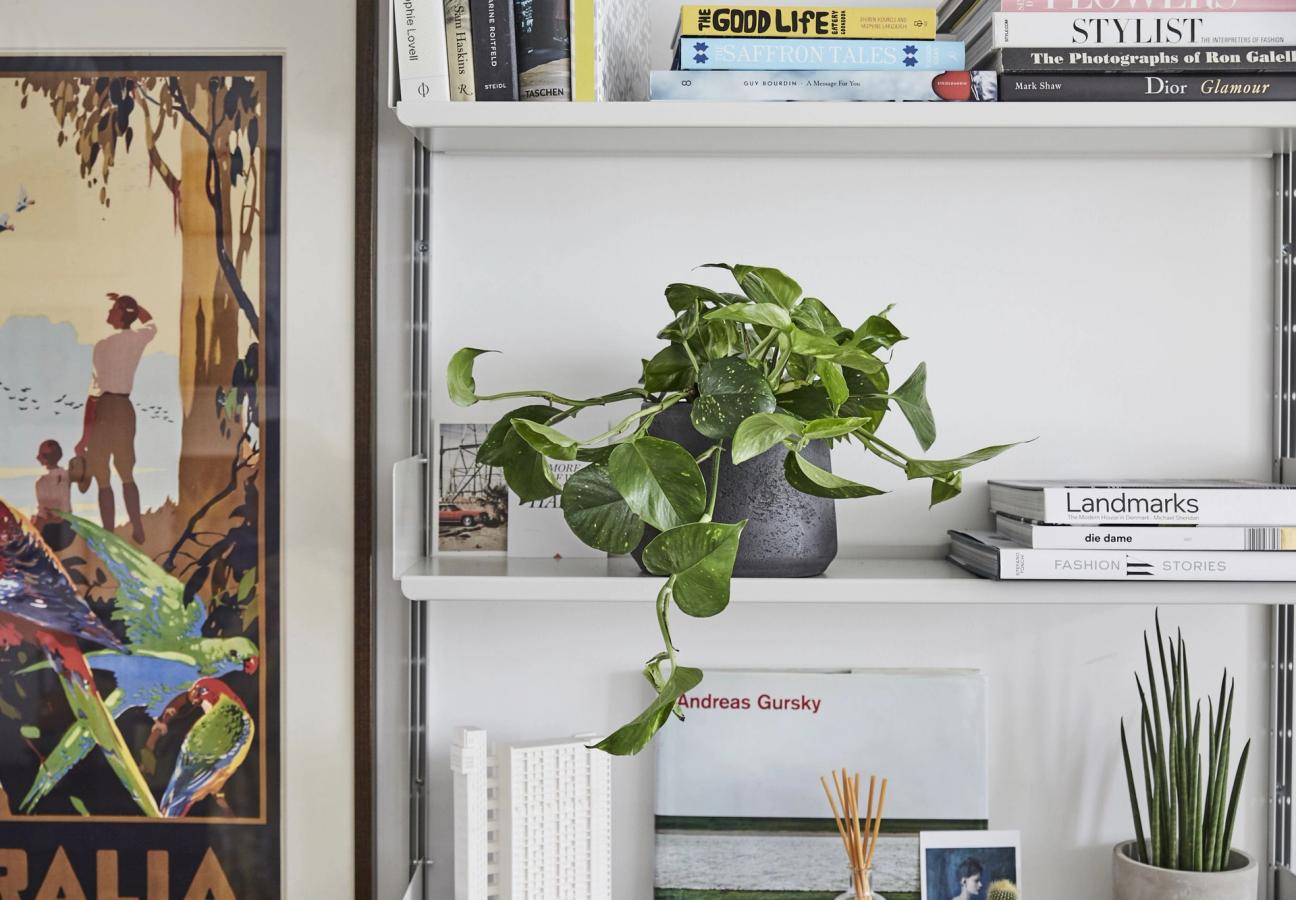
Where it’s grown: Devil’s Ivy, Ceylon Creeper, Epipremnum Aureum — call it what you will. This rather splendid plant hails from the forests of South East Asia and French Polynesia. You’ll find it sprawling over large tree trunks, and it’s at its best in deep, dark shade.
How it blooms: This is a versatile bloomer, make no mistake. It’ll do well as a hanging plant — you could position it on a shelf, or a mantelpiece, or anywhere you choose, really — or it can even be trained to climb a wall. And it provides an opportunity to perfect your gardening skills — if any of the stems are looking sorry for themselves, you can prune them by using clean scissors to cut them back.
How to care for it: It’s another easy one. It thrives with moisture, so it’s another plant that’ll be perfectly happy in the bathroom or kitchen; and it can handle most lights, too. It only needs infrequent watering — just check it once a week or so, to see if the soil’s dry — and consider giving it some liquid fertiliser once a month in the spring and summer months.
The Parlour palm will be a jubilant addition to any living space
Where it’s grown: The Chamaedorea Elegans, to give it its due diligence, hails from Mexico and Guatemala, primarily; but it’s been a favourite all around the world since the Victorian era, hence its name. Any home with this vibrant palm reigning supreme over its parlour would indicate a worldly-wise sophistication on the part of the owners; and so the ‘parlour palm’ was born.
How it blooms: It can reach a staggering height of 70-80cm; but it’s actually one of the slowest growing plants around. It can take as long as decades to reach full height — but no matter how many centimetres it stands at, its exotic appearance and generous palm fronds will bring an inherent elegance to any room in which it stands.
How to care for it: The more moisture in the air, the greener and fresher those leaves will be; so it’s best to mist it about once a week. Bright light is appreciated, but direct sunlight not so much; and it’ll need fairly frequent watering during the spring and summer months (approximately weekly, though keep an eye on that soil). It wouldn’t say no to a liquid fertiliser feed during the warmer months, either.
Looking for more ways to improve your living space? These are the smart home devices worth investing in…
Become a Gentleman’s Journal member. Find out more here.
